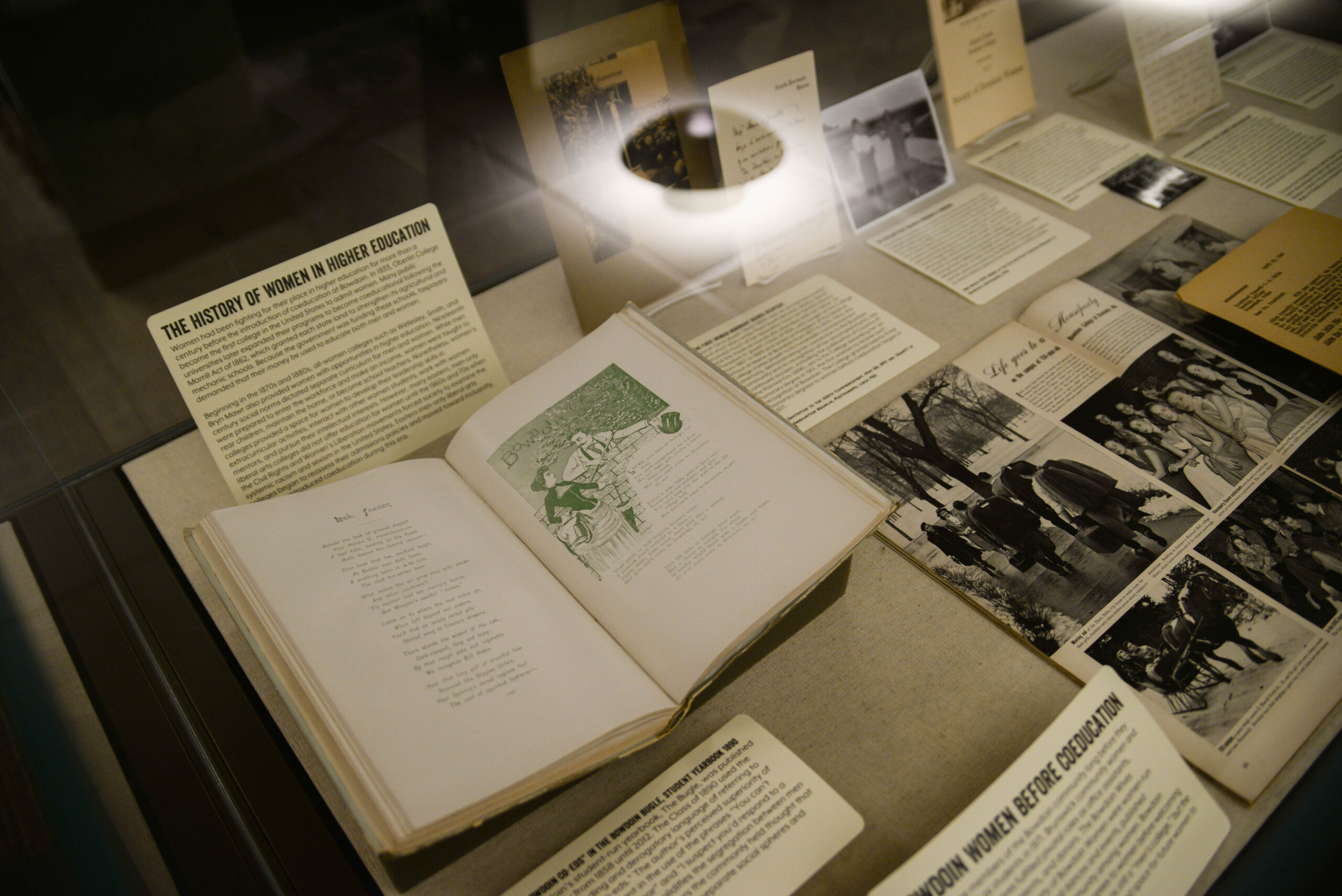H-L staff reflect on popular reads over academic year
February 18, 2022
 Cora Dow
Cora DowIn 1965, the College’s library moved into the space students now know as the Hawthorne-Longfellow (H-L) Library. Today, the library houses nearly one million books in its 71,000 square-foot space, ranging from contemporary best-sellers, to academic reserves, to a collection series curated by students of color at the College.
One of the hallmarks of H-L is the New Books alcove on the first floor, a display which also features popular reads—some contemporary, some classics—that are currently in high circulation. The top seven most checked out titles among these books, below, have been altogether checked out 116 times:
- “Ceremony,” Leslie Maron Silko (1977)
- “The Round House,” Louise Erdrich (2012)
- “The Bone People,” Keri Hulme (1983)
- “The Plague of Doves,” Louise Erdrich (2008)
- “The Painted Drum,” Louise Erdrich (2005)
- “God Help the Child,” Toni Morrison (2015)
- “When My Brother Was an Aztec,” Natalie Diaz (2012)
Many of the titles in the New Books alcove were spotlighted as installments of the library’s new BIPOC Collection Display, which gives BIPOC students at the College the opportunity to represent their identity through self-curated literary collections. More than half of the top titles in the current New Books display, such as “Ceremony,” “The Bone People” and “When My Brother Was an Aztec” were added by Shandiin Largo ’23 for her Indigenous Book Collection.
“The main purpose of this book display is to dispel racist and harmful stereotypes made about indigenous peoples that still exist in the media and in our classrooms,” Largo said in her curator’s statement upon the Collection’s release. “As a member of an institution and a society that have been the perpetrators of the dehumanization, exoticization and erasure of indigenous peoples, you should let this book display and its contents remind you that indigenous peoples still exist and are thriving.”
Among the library reserves, where students may access textbooks and other academic texts for their College coursework, the top seven titles have together been checked out a total of 135 times:
- “Principles and Practice of American Politics: classic and contemporary readings,” edited by Samuel Kernell and Steven S. Smith (2015)
- “The State and Politics In Japan,” Ian Neary (2002)
- “Education, Equity, and the States: How Variations in State Governance Make or Break Reform,” Sara E. Dahill-Brown (2019)
- “The Deficit Myth: Modern Monetary Theory and the Birth of the People’s Economy,” Stephanie Kelton (2020)
- “Life in Rewind: The Story of a Young, Courageous Man who Persevered Over OCD and the Harvard Doctor who Broke All the Rules to Help Him,” Terry Weible Murphy (2010)
- “The Making of a Poem: a Norton Anthology of Poetic Forms,” edited by Mark Strand and Eavan Boland (2001)
- “The Art of Ancient Egypt,” Gay Robins (1997)
Bowdoin students, however, are not the only patrons of H-L: the Bowdoin College Interlibrary Loan (ILL) and, more specifically, the Colby-Bates-Bowdoin Catalog (CBBCat), also revealed the most frequently requested books that Colby and Bates check out from Bowdoin’s H-L Library.
According to Spencer Follett ’22, Interlibrary Loan Senior Borrowing Strategist, the top three borrowed book subjects from Bowdoin by Colby and Bates are about Maine railroads, Maine history and the Civil War.
“What I’ve experienced in what other libraries want from us is often a lot of Maine-specific books that we might have, or old Maine books, because that’s something that our collection has that a lot of other collections don’t,” Follett said. “It’s interesting to see what our library can provide to other libraries because of our unique funding, location and alumni network—that dictates a lot of what ends up in our collection.”
While H-L Library might be known as the keeper of many archaic reads, Marjorie Hassen, director of the Bowdoin College Library, encourages students to engage with the myriad collections in H-L and to remember the vast array of contemporary reads available for checkout.
“I don’t know if students know that they can come in here, and if there’s a new book out or something from the New York Times Bestseller list, that we have them,” Hassen said. “For me, it’s about getting the word out about the breadth of what we have.”

Comments
Before submitting a comment, please review our comment policy. Some key points from the policy: